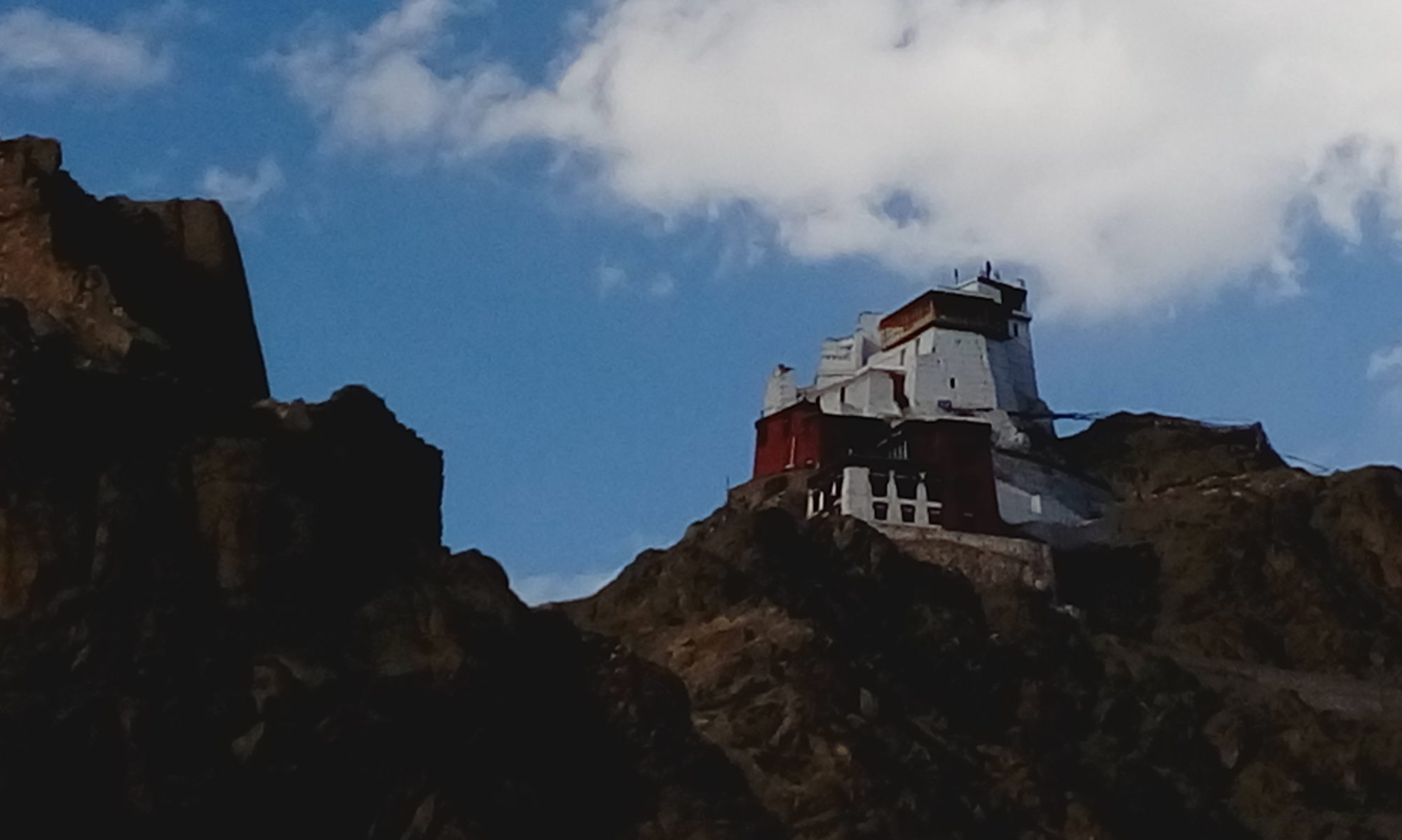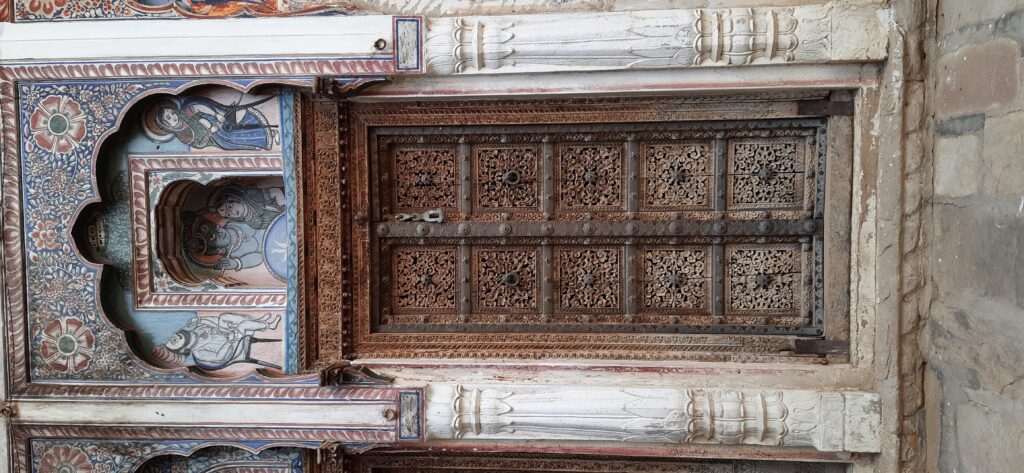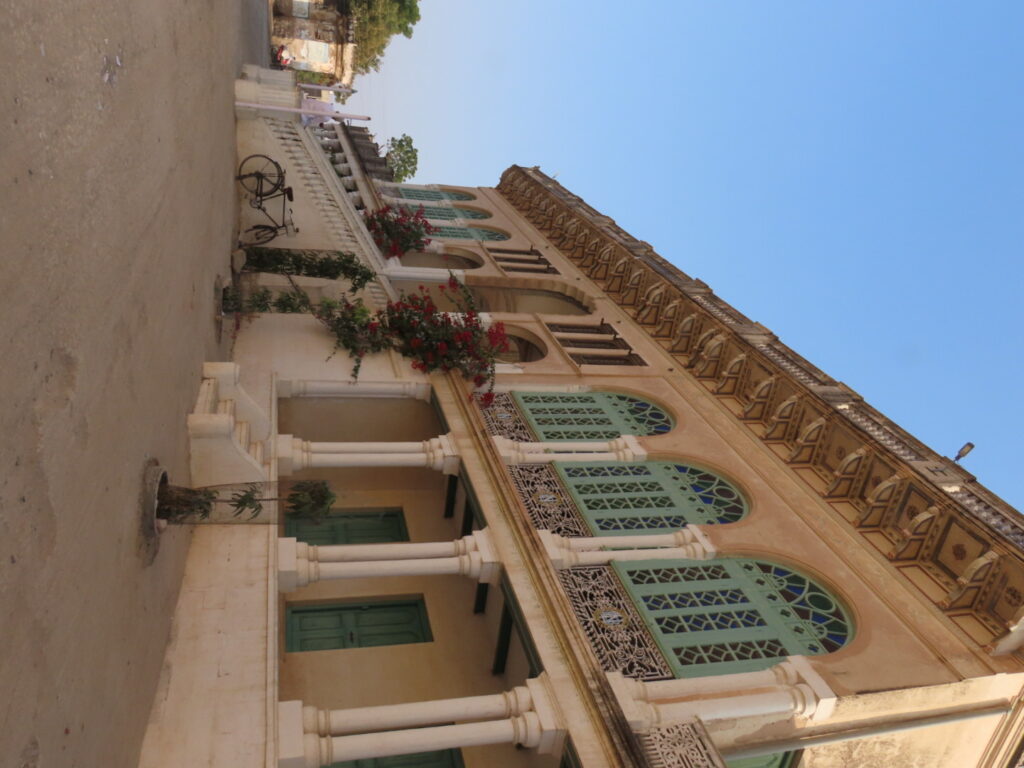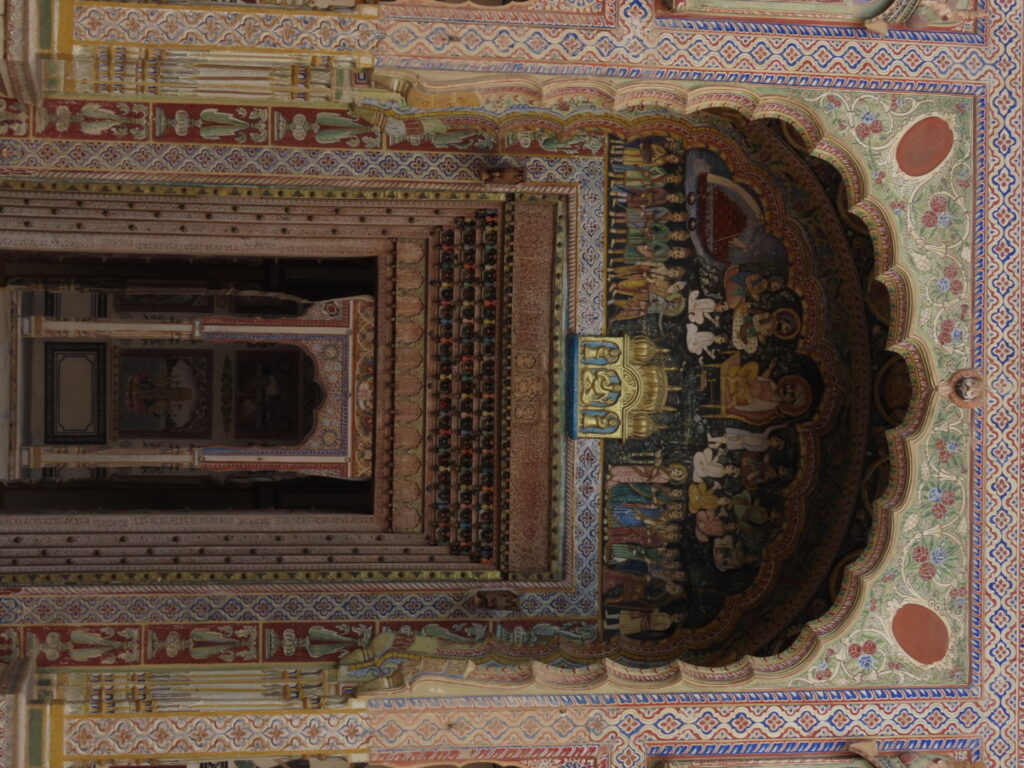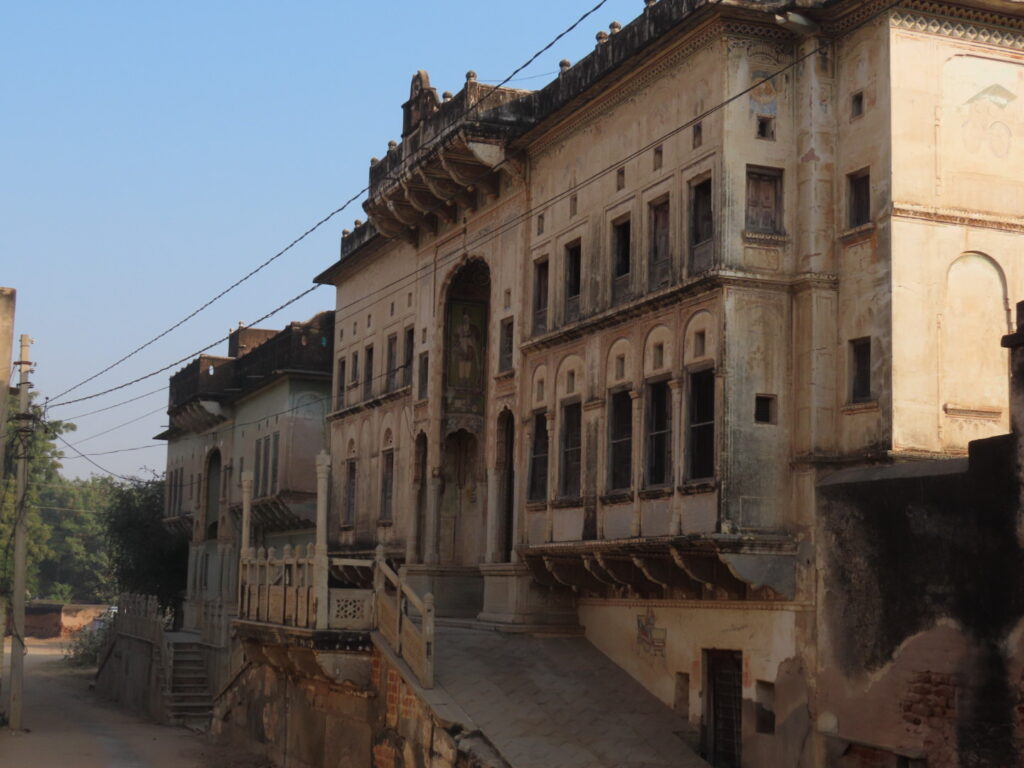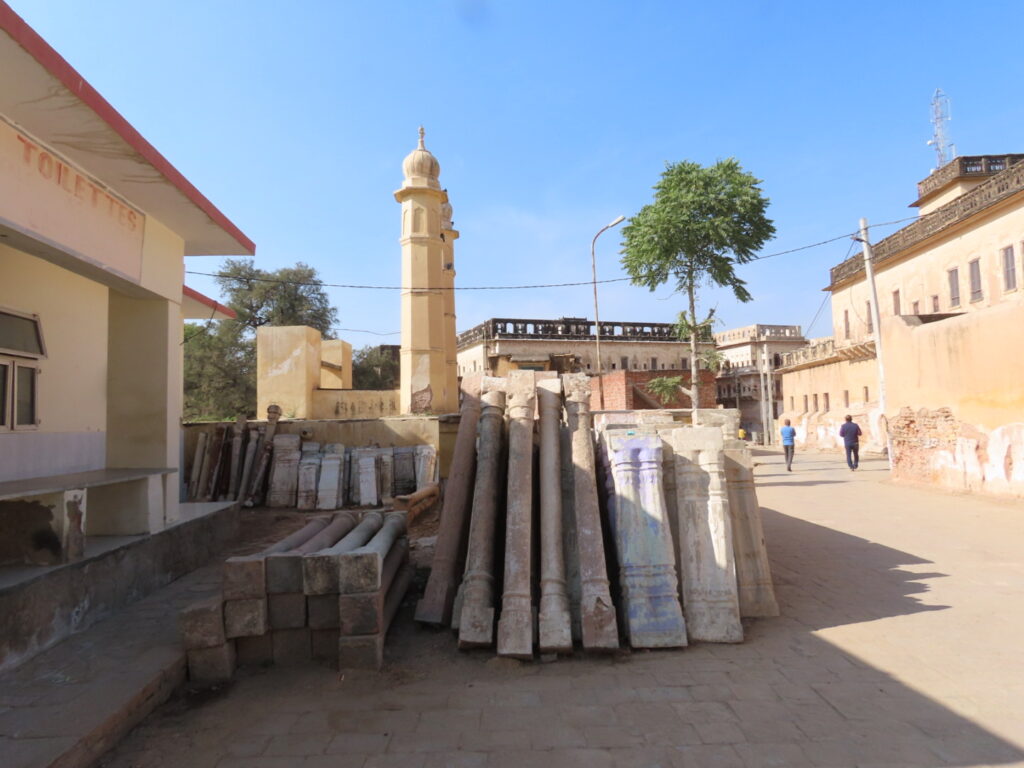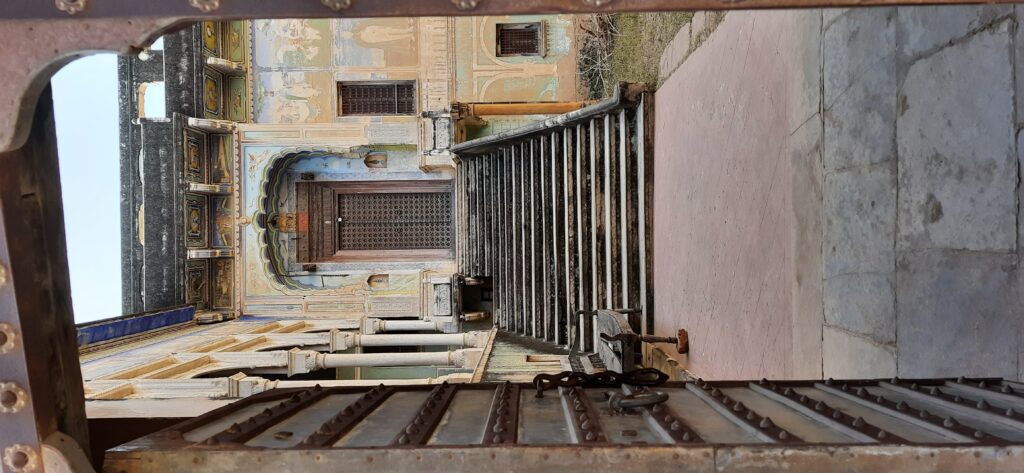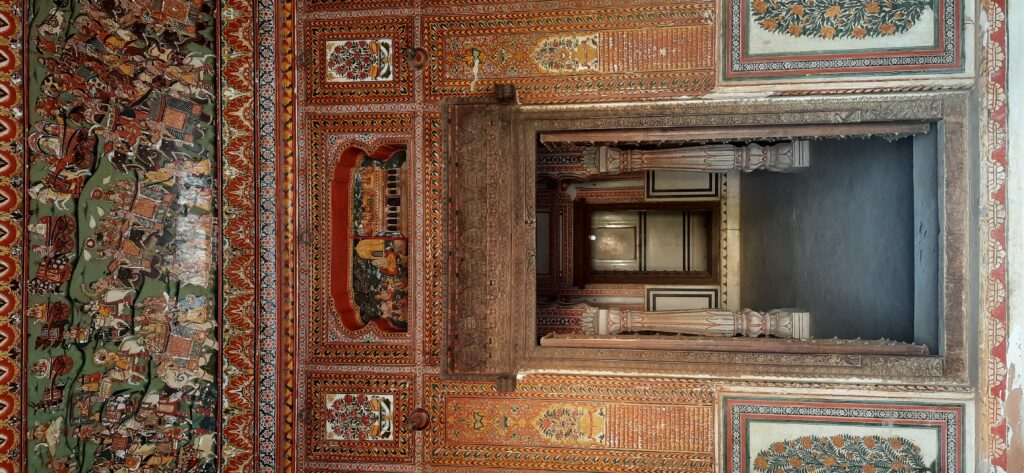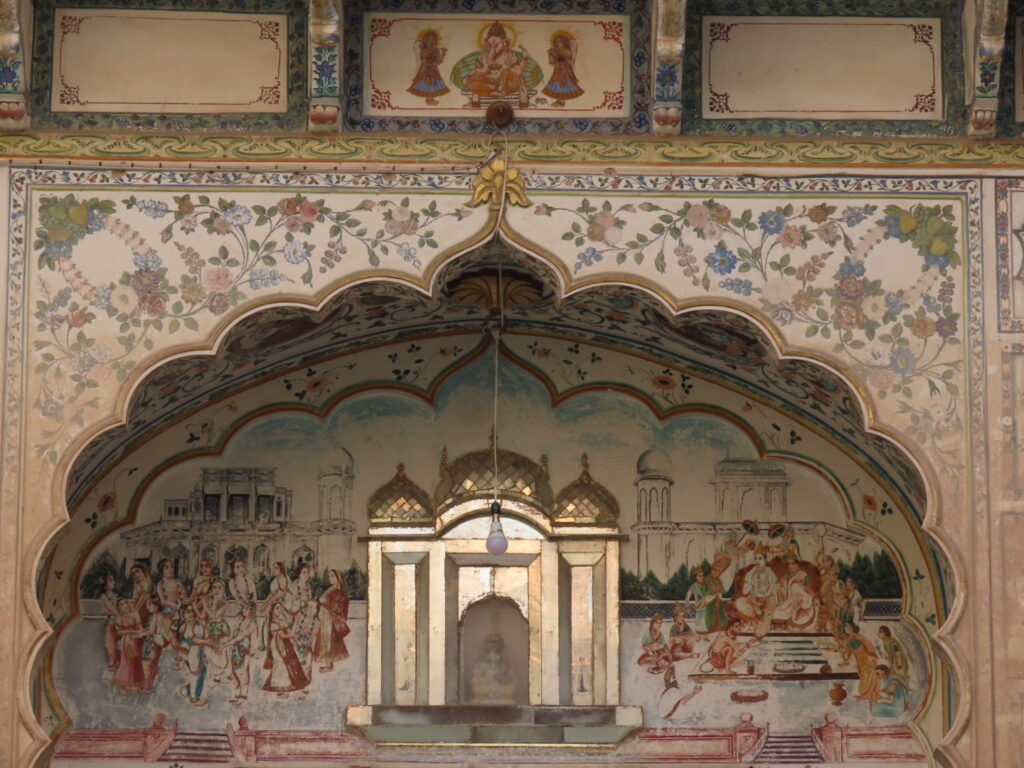Chances are that when you search for places to visit in Rajasthan the 3Js will dominate the itinerary circuit. But Rajasthan’s treasure chest has more gems waiting to be discovered apart from flashy Jaipur, Jodhpur, Jaisalmer and maybe Udaipur. Having sampled the visual treat that Mandawa offered our appetites were totally whetted to try out whatever else the Shekhawati region had to offer. After much debate and ifs and buts we settled on Nawalgarh, Dhundlod, Mehansar and Ramgarh Shekhawati. Perfectly packed itinerary for a weekend vacation of discovering fascinating frescoes and haveli hopping!
We try to make an early start from Delhi and the highway is intermittently lined with mustard fields covered by a thinning mist as we make our way to Mandawa to pick up Om Ji, the guide from our previous trip. Through the drive to Mehansar the discussion veers to the trading practices of the merchants here. Apart from trading in opium, cotton etc, the shrewd businessman seemed to have literally extracted his pound of flesh through exploitative money lending practices from the hardy and poor farmer of this region, where the crops depended solely on the liquid benediction of the moody monsoon.
Read- Batalik – A Tribute to the Human Spirit to discover another lot of tough people living in a cold desert.
Mehansar’s Oh My Moment!
We stop outside a wayside unpretentious haveli at Mehansar. Here the room where business was conducted, in a deviation from the norm, opens into the street instead of a courtyard. An uncovered veranda lined by a drain sits between the room and the dusty street. Om Ji gets the keys from the caretaker and opens a rather small door typical to this area. As the lights are flicked on we gaze up and around in amazement. It’s a room meant to awe the visitors and marvel at the owner’s refined taste. Every inch is painted in a rich palette.
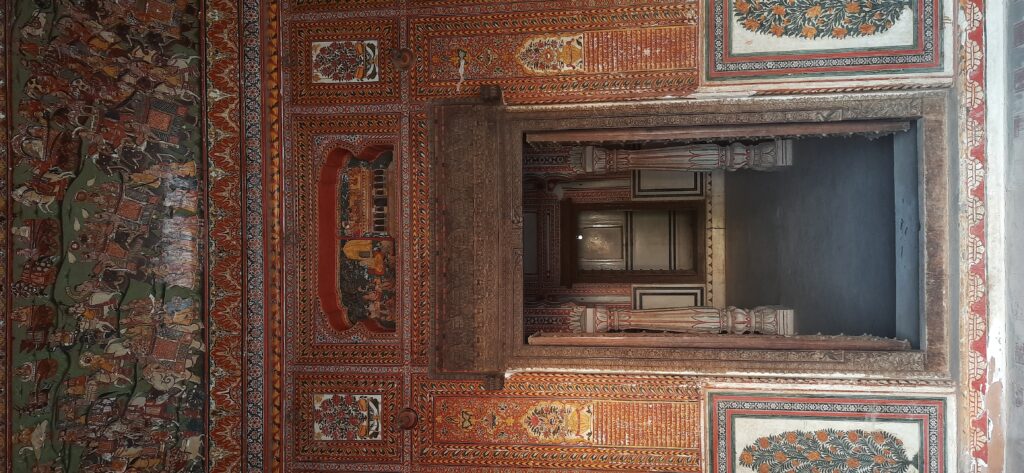
The motifs on the walls are in crimson red but its the 3 sections of the roof which are the masterpieces. In one section the Yamuna is a broad thread of dull molten gold running through the story of Krishna’s life around the roof. On the other side it’s the Ramayana with a ‘Sone ki Lanka’ in burnished gold. The 180 year old ‘sone ki dukaan’ as this room is called seems like a miniature version of the fabled kingdom. But its not just the use of pure gold in the paintings that is stunning, it’s the finesse with the which the miniature paintings have been done. The world outside looks infinitely drab after that stellar show!
I saw a show like no other at- Tarsar Marsar : A Trekker’s Take
Ramgarh Shekhawati’s Remarkable Chattris
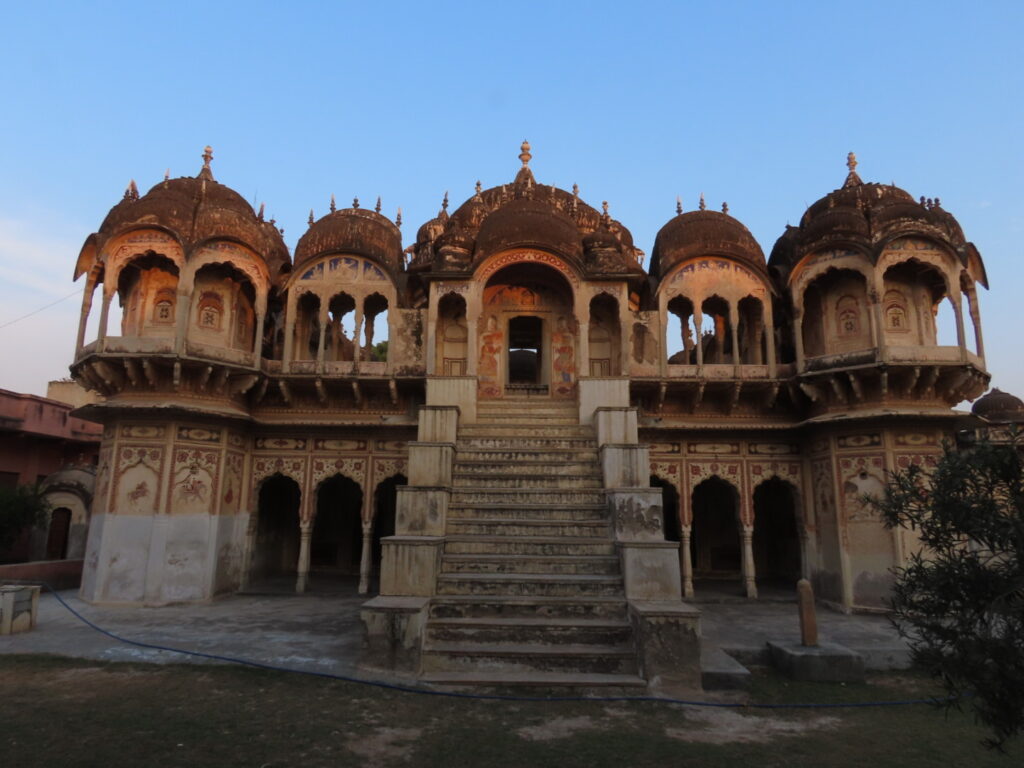
The drive from Mehansar to Ramgarh is a short blur and we wind our way past numerous wells and chattris enclosed behind high walls to come to the Poddar chattris. Built from 1872 onwards these airy pavilions have mandirs tucked inside in the ground floor which often doubled up as serais or inns. Wide staircases lead up to domes surrounded by arched balconies in this cluster of elaborate structures. The setting sun seen through the arches shines on the domes which have frescoes where Krishna multiplies himself endlessly to dance with each gopi around the roof. A Rasamandala. One can imagine these chattris making a dramatic backdrop for a cultural extravaganza. Unfortunately right now they’ve been usurped by someone who is using one of the arched structures as a cowshed. The cow’s kismet!
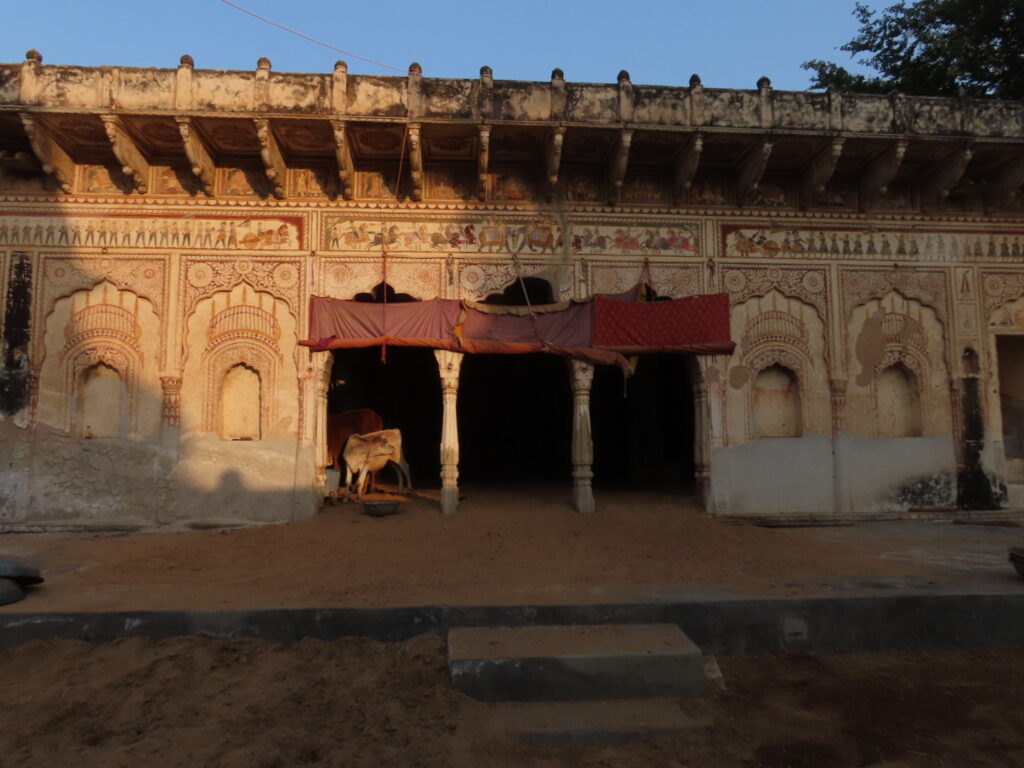
History and more dwells in- 3 Churches in Mhow: Discovering Obscure History and Outstanding Carols
Traditional and Nouveau Art at Nawalgarh
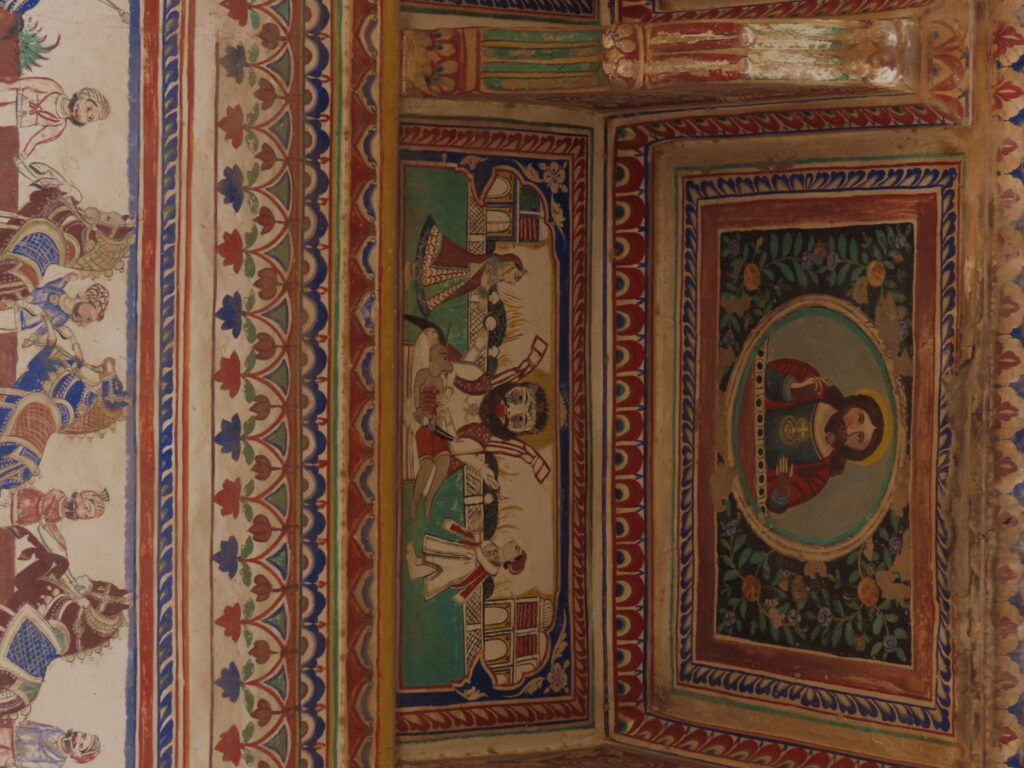
As testimony to its wealthy past, havelis are scattered dime a dozen in the winding bylanes in Nawalgarh. We head for the Morarka Haveli. Outside the mansion, under an eave, a portrait of a slightly forlorn looking Jesus is pointed out to us. I suppose his expression is borne out after years of looking at the dismembering happening in the panel below! In the outer courtyard a man plays a one stringed instrument, his voice rising to a melancholic crescendo. The music reverberates in the courtyard.
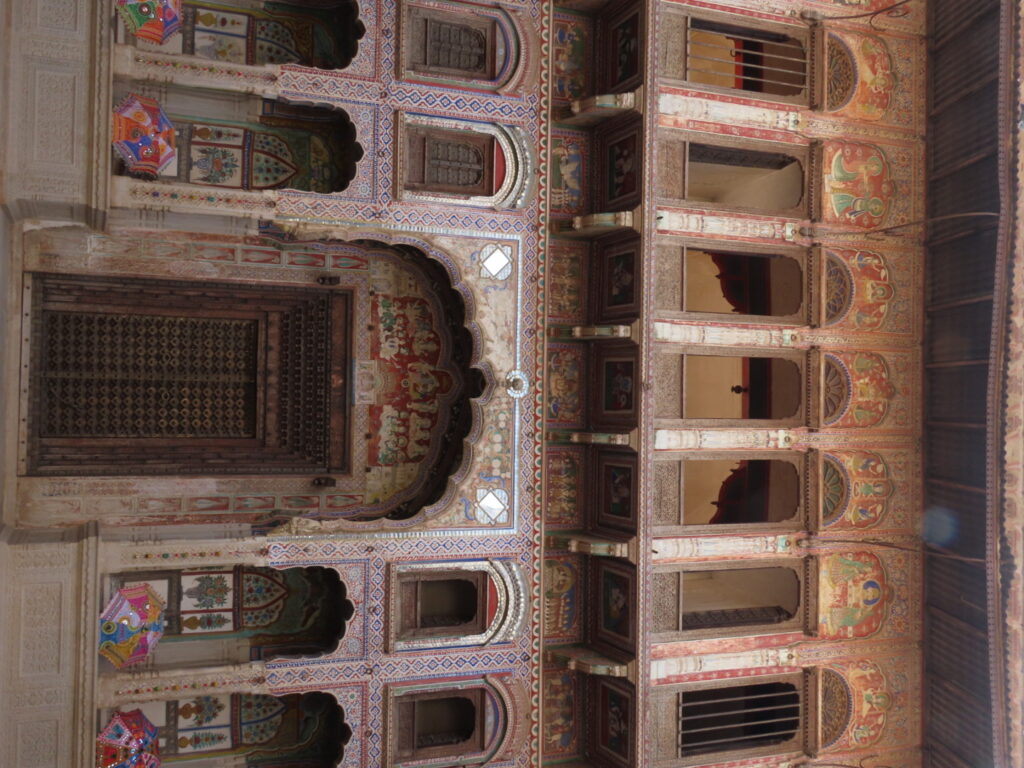
The inner door has bubbles of Belgian glass lining it. Stunning wooden arches hold coloured glass panes. The light filtering though makes them glow. A portrait of a young woman with pencil thin brows and a bindi with wings peers into the distance in a scalloped arch above a carved window frame. From the first floor one glimpses the pristine white and red lined domes of chattris across the lane.
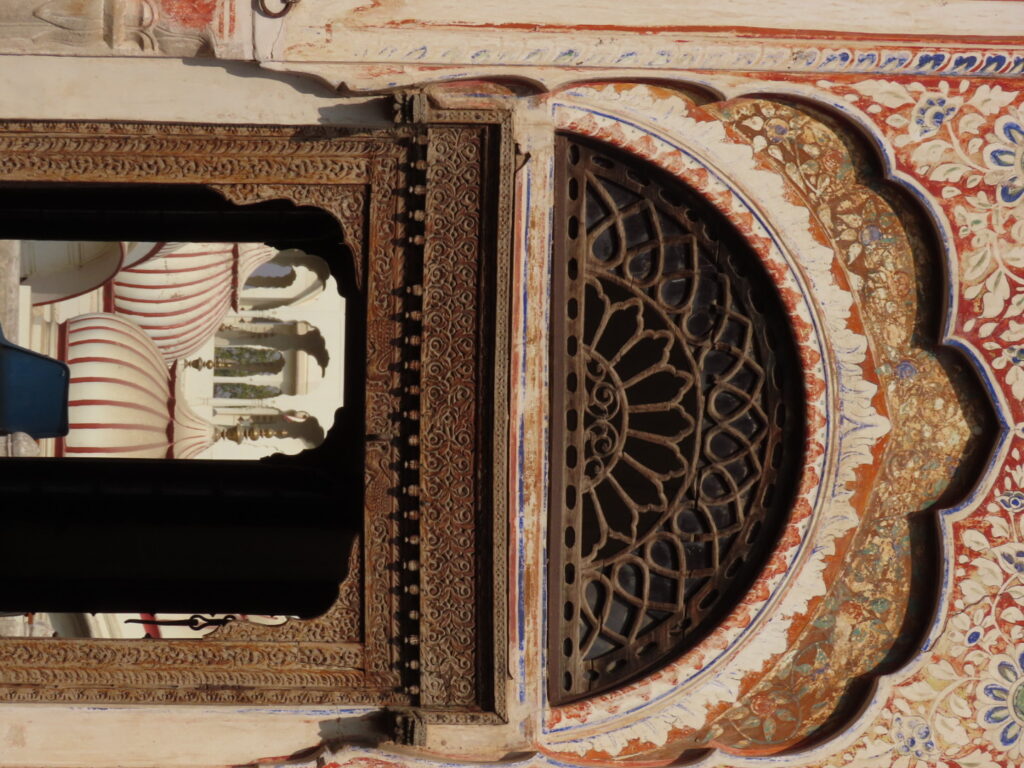
Discover winged visitors of Rajasthan in – The Bird-book of Bikaner
A lane away the Poddar haveli being run as a museum is a beautifully built, lavishly painted not to mention a very well maintained mansion. The first courtyard has more traditional elements and is covered with frescoes. The arch above the inner door is a piece of work where the owner and his business share space with various deities. A panel on a wall catches my eye where on one end a woman in a gown and parasol seems to be having a rendezvous with a young man.
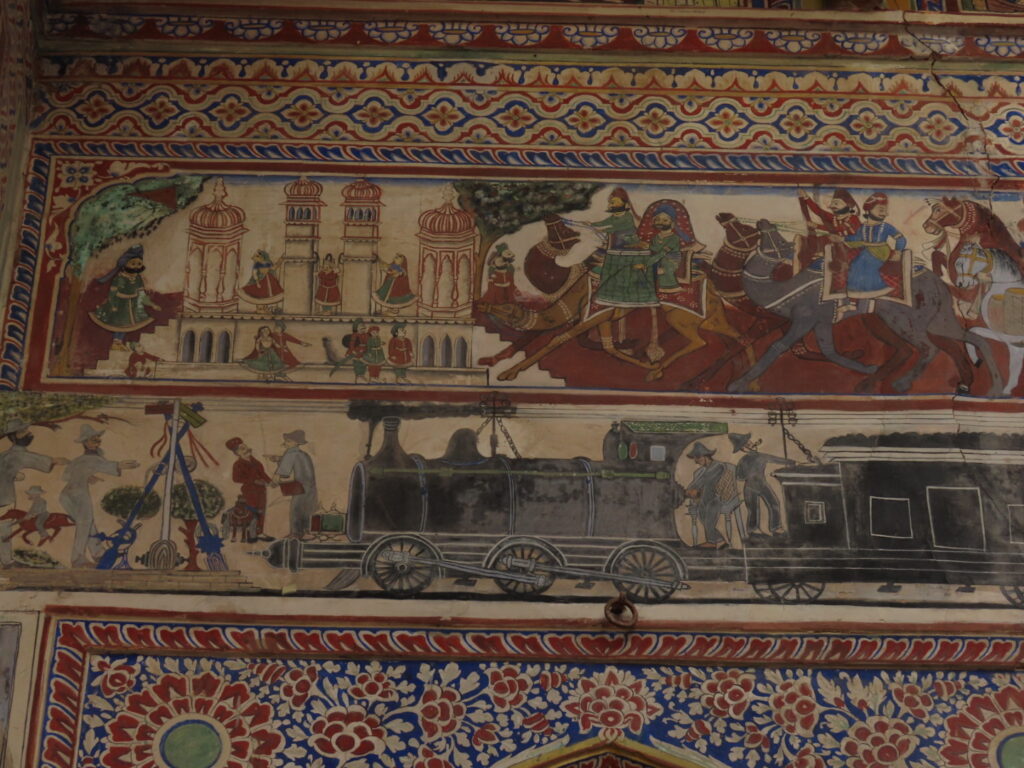
On the other a rather irate looking white man in front of a steam engine is haranguing with a local holding a red flag. Their expressions and details are priceless. A parallel panel above depicts a world apart with scenes of the local revelry and the gangaur festival. The upper floor in pale lime green finish has inverted carved arches holding up slender cream pillars. The rooms inside showcase various aspects of the local culture right from styles of turbans peculiar to each community to various houses of Rajasthani miniatures.
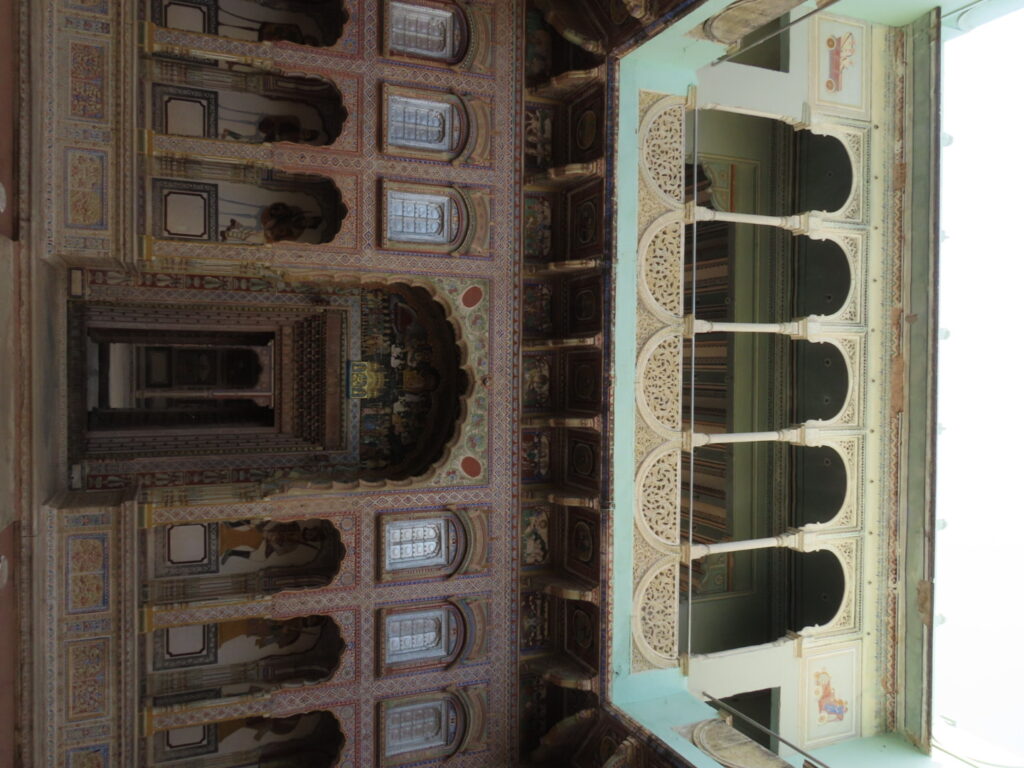
A place like no other is- Chushul -Chumathang -Hello Indus & Iridescent Colours!
The Doors of Dhundlod
The final stop of the day is another museum depicting everyday life with life sized figurines at the Goenka haveli in Dhundlod. A wide ramp leads to the massive door of the haveli. The inner door is carved and studded with tiny pieces of ivory.
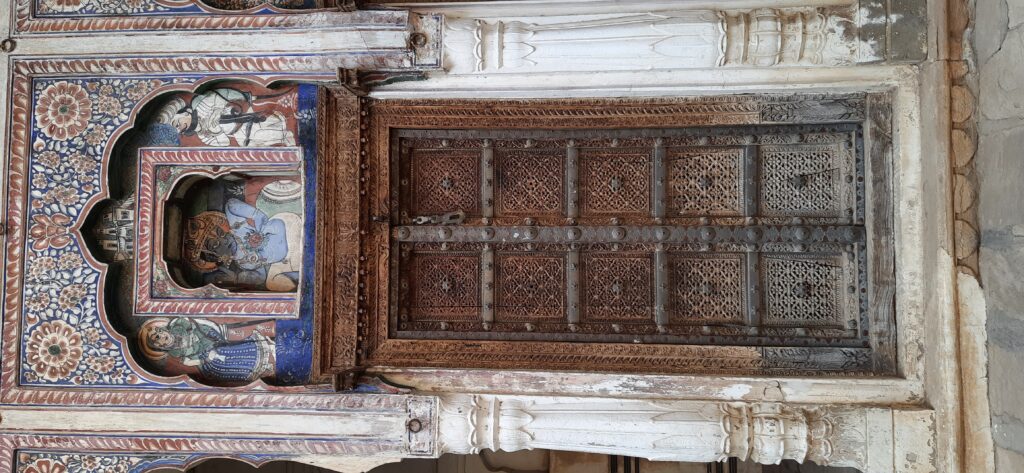
But the truly drool worthy, to have by hook or by crook are the exquisitely carved doors inside. Embellished with beaten brass each one is unique. The arches above them painted with gods and perhaps members of the household. In a room with a big swing made of wood and inlaid with glass for a tiny bal gopal lie tattered catalogues and brochures with swatches of cloth en vogue in Calcutta in early 20th century. The inner courtyard wall has a small niche to holds a tiny throne to keep a saligram. The primal representation of god deserves one.
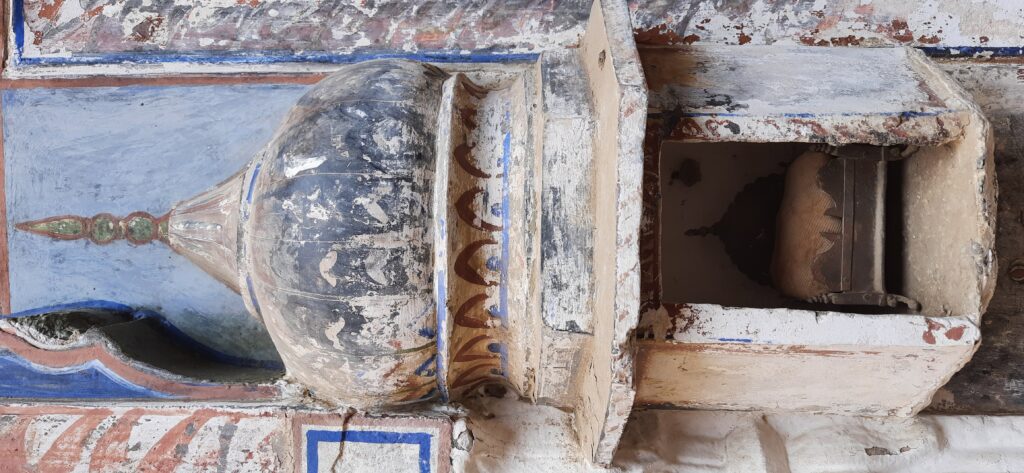
A place like no other is- Pangong Tso -The Gems in the Crown
Satiating all the Senses
Heading back to Churi Ajitgarh where we are putting up we stop to pick up some raj bhog rasgullas. The giant caramel coloured sweetmeats are supposed to be a specialty and to balance out the palate we add the ubiquitous mirchi pakoras and kachoris, served here with an interesting chutney of tamarind and curd. Sights done now its time to indulge in the smells and tastes of the land!
A must on a foodie’s plate is- Nasirabad’s Kachora: More than a Savoury Story
Shekhawati is a visual smorgasbord laid out for slow sampling and one needs to come back to the table again and again to appreciate its artful presentation and idiosyncratic ingredients. This vast region dotted with towns and hamlets is a bit like the rich rasgullas we had… one has to squeeze out some excess syrup to get the full flavor.
Fact File–
1.Itinerary-
Day 1- Drive from Delhi to Mandawa and visit Mehansar and Ramgarh Shekhawati.
Day 2- Visit Nawalgarh and Dhundlod.
From Jaipur one will reach Nawalgarh first. So plan accordingly.
1.Staying-
We stayed at Vivaana Culture Hotel at Churi Ajitgarh. It is about 9 kms from Mandawa. It comprises of 2 adjoining havelis.
There are a few options in Mandawa, Nawalgarh and Dhundlod.
2.Entry Fee-
All the places we visited charged anything from 50/- to a 100/- INR.
3.Getting there-
The best way is to drive from either Delhi or Jaipur.
